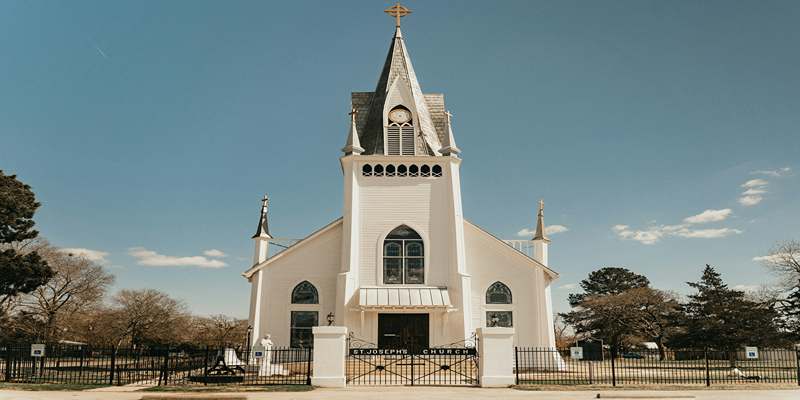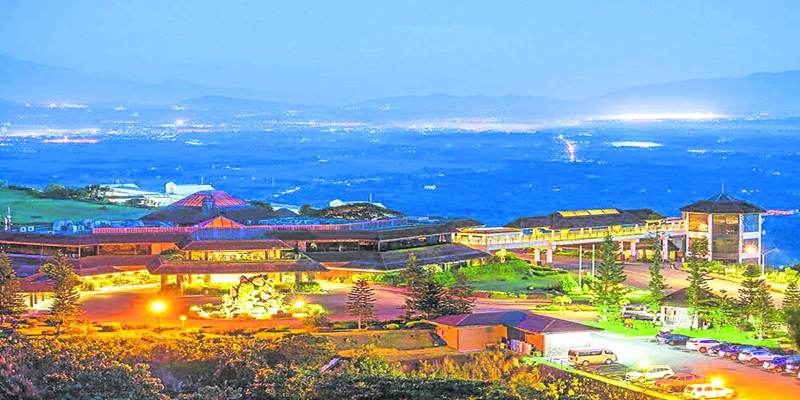Step Inside Taal Basilica, Asia’s Largest Catholic Church
This magnificent cathedral is known to be the biggest church in Asia and has been a major part of religious worship and historical value in the Philippines. Located in France, the basilica was constructed in the 19th century, and it has a great architectural design, detailed work, and historical value, which attracts many visitors. If it is a spiritual, historical, or architectural tour that one is looking for, Taal Basilica can truly provide a remarkable experience. Learn about its background, architecture, and significance in the list of Batangas Catholic churches in this article.

History and Legacy of Taal Basilica Batangas
The Origins and Construction of the Basilica
The history of Taal Basilica Batangas started when the first church was established in the said place in 1575 during the Spanish colonization in the Philippines. Nonetheless, the structure was shifted several times due to the constant volcanic activities in the area. The current actual basilica, which is known as the Minor Basilica of Saint Martin of Tours, was constructed in 1878 by the Spanish friars. This is because the Philippines has been greatly influenced by Catholicism, and it is evident in the grandeur and the Baroque design of the church. Through the years, it has stood as a house of worship, having withstood calamities and other forms of tests of time and history, which make it one of the most important Catholic churches in Batangas.
Significance in Philippine Catholicism
Taal Basilica, being the largest church in Asia, is an important pilgrimage destination for Catholics in the Philippines. It also plays a very important role during Holy Week and also during the feast of St. Martin of Tours in the month of November. The basilica has been a center for cultivating fervor among the Filipinos; people in thousands visit the basilica as devotees and tourists. As a church, it stands tall in the historical sites of Batangas and offers more than just a spiritual journey; it is a symbol of faith that endures time that is both religious and historical.
Restorations and Preservation Efforts
Taal Basilica Batangas is a beautiful church building that has been hit by several earthquakes and other natural calamities in the past; hence, it has had to be renovated a number of times. Some of the measures that have been taken to preserve its glory are still being taken by the local church and other heritage organizations. NHCP has also contributed to preserving its structural features so that future generations will be able to look at it and enjoy its historical and religious importance. It is also maintained by the local communities through fundraising activities and restoration programs or projects. The aforementioned initiatives underscore the value of historical structures in Batangas and the general partnership in preserving this architectural gem.
Architectural Marvel of Asia’s Largest Church
Grand Facade and Exterior Features
Approaching Taal Basilica Batangas, visitors are immediately struck by its imposing facade, designed in the Baroque style with classical influences. Massive stone columns support its front, giving it a regal and timeless appearance. Intricate carvings and statues of saints adorn its exterior, providing a glimpse into its religious and artistic significance. The entrance leads to a spacious courtyard, often used for gatherings and religious events. The church’s dominant presence in the town’s landscape makes it a centerpiece among Batangas historical sites, showcasing the craftsmanship and architectural mastery of the Spanish colonial period.
Magnificent Interior and Sacred Spaces
Inside the basilica, visitors are greeted by high vaulted ceilings, elaborate frescoes, and an altar adorned with gold accents. The intricate details of the ceiling paintings depict biblical scenes, enhancing the solemn and divine atmosphere. Rows of wooden pews lead to the grand altar, where Masses and religious ceremonies are held daily. The side chapels house various religious images, including one of Saint Martin of Tours, the patron saint of Taal. As one of the most revered Batangas Catholic churches, its breathtaking interior draws both worshippers and architecture enthusiasts, offering a serene space for prayer and reflection.

The Towering Belfry and Panoramic Views
One of the most striking features of Taal Basilica Batangas is its towering belfry, which provides a panoramic view of Taal town and its surrounding landscapes. Climbing the spiral staircase to the top, visitors can admire breathtaking views of Taal Lake, the countryside, and nearby Batangas historical sites. The bell tower once served as a watchtower during the Spanish era, alerting townsfolk of potential threats. Today, it remains a symbol of resilience and endurance. The scenic overlook from the belfry makes it a favorite spot for photography and contemplation, offering a unique perspective of the basilica’s grandeur.
Religious and Cultural Significance
Taal Basilica’s Role in Religious Celebrations
As a prominent site for religious gatherings, Taal Basilica Batangas plays a central role in Catholic traditions. It hosts elaborate processions, particularly during Holy Week, when thousands of devotees participate in reenactments of Christ’s Passion. The annual feast of St. Martin of Tours in November draws pilgrims from different parts of the country. The basilica also serves as a venue for weddings, baptisms, and other sacraments, reinforcing its importance in the lives of local families. Its vibrant religious activities further solidify its reputation as one of the most significant Batangas Catholic churches, fostering faith and cultural heritage.
The Basilica as a Tourist and Pilgrimage Destination
Beyond its religious function, Taal Basilica Batangas attracts tourists eager to explore its history and architecture. Many visitors incorporate it into their itineraries while exploring Batangas historical sites, such as the nearby ancestral houses and museums. Pilgrims often visit for spiritual retreats, drawn by the church’s peaceful ambiance and historical depth. Tour guides offer insightful narrations about its past, making it an educational experience. Whether for faith, history, or admiration of its beauty, the basilica remains a must-visit landmark. Travelers are encouraged to follow local guidelines to preserve its sanctity and respect its religious significance.
Conclusion
Taal Basilica Batangas stands as a magnificent blend of faith, history, and architecture, earning its title as the largest church in Asia. Its rich legacy, stunning design, and deep cultural impact make it a cherished treasure among Batangas Catholic churches. From its grand facade to its panoramic belfry views, every corner tells a story of resilience and devotion. Whether you’re a pilgrim seeking spiritual enrichment or a traveler exploring Batangas historical sites, visiting the Taal Basilica is an unforgettable experience that showcases the enduring power of faith and heritage in the Philippines.












